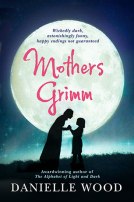 For the fourth year now, I’m devoting the year’s last Monday Musings to the Australian Women Writers Challenge*.
For the fourth year now, I’m devoting the year’s last Monday Musings to the Australian Women Writers Challenge*.
The challenge continues to be supported by a wide range of reviewers. This year we moved to a self-hosted site which enabled us to produce a single searchable database of all reviews logged since the challenge started in 2012. We now have reviews for nearly 3,000 books across all forms and genres of Australian women’s writing. An impressive resource, I’d say, for its breadth and accessibility.
As usual, the Challenge ran some special events during the year, including a focus on Lesbian/Queer women writers, author Q&As, and an In Conversation With series. These were organised by some wonderful challenge volunteers, particularly Jessica White, Marisa Wikramanayake and Annabel Smith. I think these posts deserve more air, so will share them here:
- Lesbian/queer women writers: Francesca Rendle-Short, Lee Winter, Tricia Dearborn and Inga Simpson
- Women writers of ethnic heritage: Maxine Beneba Clarke, Marisa Wikramanayake and Queenie Chan
- Aboriginal and Torres Strait Islander women writers: Gayle Kennedy
- In conversation with … (audio series): Jane Rawson, Liz Newell, Jackson, Marianne de Pierres, and Robin Bower
- Author Q&A/Interview: Jaye Ford, Ceridwen Dovey, Allison Tait, Kate Forsyth, and Inga Simpson
- Guest post: Bec Kavanagh (on the #weneeddiversebooksau campaign) and Sian Prior (on writer’s block)
The Australian Women Writers’ Challenge is the only challenge I do (or have ever done). This year I posted 27 reviews for the challenge, three fewer than last year. I managed a similar variety in my reading, but unlike last year, I didn’t manage to read one book from my TBR pile. It was, I must say, an erratic year for me and I feel that I lurched from book to book, scrabbling to keep up. If I set myself one goal for next year it would be to tackle the TBR pile a little! On the plus side, three Australian women feature in my top ten posts for the year – Hannah Kent, Barbara Baynton, and Tara June Winch. What a diverse group that is!
Anyhow, here’s my list of works read for this year (with links to the reviews):
FICTION
- Emma Ashmere, The floating garden (Historical fiction)
- Emily Bitto, The strays (Historical fiction)
- Dymphna Cusack, Jungfrau (Classic)
- Caroline de Costa, Double madness (Crime)
- Eleanor Limprecht, Long Bay (Historical fiction)
- Fiona McFarlane, The night guest (Contemporary)
- Kavita Nandan, Home after dark (Autobiographical fiction)
- Jane Rawson, A wrong turn at the Office of Unmade Lists (Speculative, Cli-fi)
- Alice Robinson, Anchor point (Contemporary, Cli-fi)
- Wendy Scarfe, Hunger town (Historical fiction)
- Ellen van Neerven, Heat and light (Novella/Short stories)
- Jessica White, Entitlement (Contemporary)
- Danielle Wood, Mothers Grimm (Contemporary)
SHORT STORIES
- Anna Funder, Everything precious (Long short story, later republished as The girl with the dogs)
- Angela Meyer, Captives (Collection of flash fiction)
- Paddy O’Reilly, Peripheral vision: Stories (Collection)
- Pulse: First 2014 (Anthology)
- Julie Twohig, Full circle (Short story)
- Ellen van Neerven, Sweetest thing in Review of Australian Fiction 10 (4) (Long short story)
- Lynette Washington (ed), Breaking beauty (Anthology)
NON-FICTION
- Ruth Bacchus and Barbara Hill, First things first: Selected letters of Kate Llewellyn 1977-2002 (Letters)
- Carmel Bird, Fair game: A Tasmania memoir (Essay)
- Kate Grenville, One life: My mother’s story (Biography)
- Karen Lamb, Thea Astley: Inventing her own weather (Biography)
- Tara Moss, The fictional woman (Memoir-cum-social commentary)
- Rochelle Siemienowicz, Fallen (Memoir)
- Biff Ward, In my mother’s house (Memoir)
There are some subtle differences from last year’s list to this. For example, last year nearly all the non-fiction reads were memoirs, whereas this year only two are. I read a similar number of novels as last year, but twice the number of historical fiction novels, 4 versus last year’s 2. I will talk more about that in another end of year post. I would like to have read more classics/older books.
Anyhow, if you are interested in the challenge, you can check it out here. I don’t believe the sign up form is ready for 2016, but watch the site. You are most welcome – whether you are female or male – to join us. The challenge is also on Facebook, Twitter (@auswomenwriters), GoodReads and Google+.
Finally, a big thanks to Elizabeth and the rest of the team – including Lewis, our wonderful database developer – for making it all such a cooperative, and enjoyable experience. Roll on 2016.
* This challenge was instigated by Elizabeth Lhuede in 2012 in response to concerns in Australian literary circles about the lack of recognition for women writers. I am one of the challenge’s volunteers – with responsibility for the Literary and Classics area.









